What’s diverticulitis?
You’ve likely heard that eating a high-fiber diet and getting plenty of exercise are important aspects of a healthy lifestyle. Not only can these things ward off weight gain and disease, but they can also aid digestion, which helps keep the large intestine and colon healthy. When people don’t follow these wellness recommendations, it can make it more difficult for stools to pass, which stresses the colon. As a result, diverticula, or small bulging pouches, may form.
According to the U.S. National Library of Medicine, about 50 percent of folks over the age of 60 have diverticula. While some people may never know about the small pouches in their large intestine, other folks may develop diverticulitis, a condition that occurs when diverticula become inflamed or infected. Diverticulitis can cause severe abdominal pain, stomach distention, fever, chills, nausea, and constipation. And in severe cases, diverticulitis can lead to bleeding, tears, or blockages in the digestive tract, says Sarah Koszyk, RDN, a registered dietitian and sports nutritionist in San Francisco, California. See if you relate to any of these 8 silent signs of diverticulitis.
While this all sounds a bit scary, if you address it early on, treating diverticulitis can be pretty simple. Most patients will be prescribed medication and told to go on bowel rest, which includes a special diverticulitis diet, Koszyk explains. “A diverticulitis diet decreases the number of bowel movements a patient will have, which gives the inflammation a chance to go down,” Koszyk explains. You may also want to learn more about these 8 diets to consider if you have digestive problems.
Read on to learn which foods are safe to eat during each stage of the diet, which are best to avoid, and how to prevent future diverticulitis flare-ups.

Starting a diverticulitis diet
After you’ve been diagnosed with diverticulitis, your doctor will likely prescribe a clear liquid diet. While it’s very restrictive—and not exactly fun to follow—it’s designed to give your digestive system a rest, which can help to ease some of your uncomfortable symptoms.
“During a flare-up, following the right diet is essential. The goal is to decrease fecal bulk. The quicker this is done, the quicker the inflammation will subside,” Koszyk says. For future reference, here are 18 foods that fight inflammation.
Because a clear liquid diet doesn’t provide adequate calories or nutrients, your physician or nutritionist will likely prescribe an all-liquid diet or a low-fiber diet as soon as you can tolerate it.
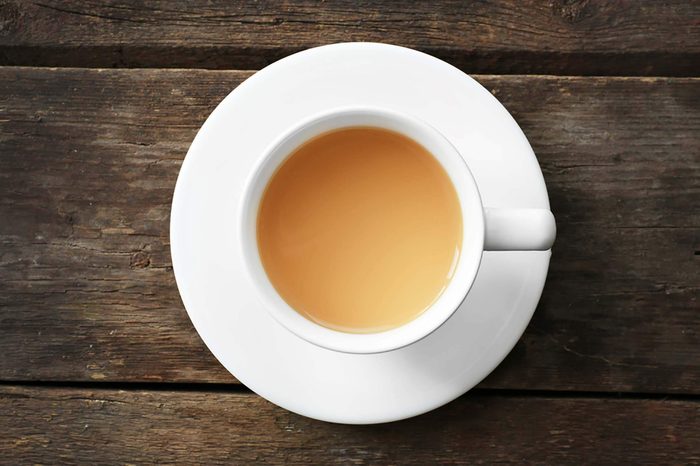
What you can have on a clear liquid diet
Nutrition and healthy eating, your health care provider may recommend things like:
-
Chicken, vegetable, or bone broth
-
Ice chips
-
Water
-
Plain gelatin
-
Tea
-
Light-colored hard candies
-
Light-colored juice (such as apple or pineapple juice)
-
Strained lemonade
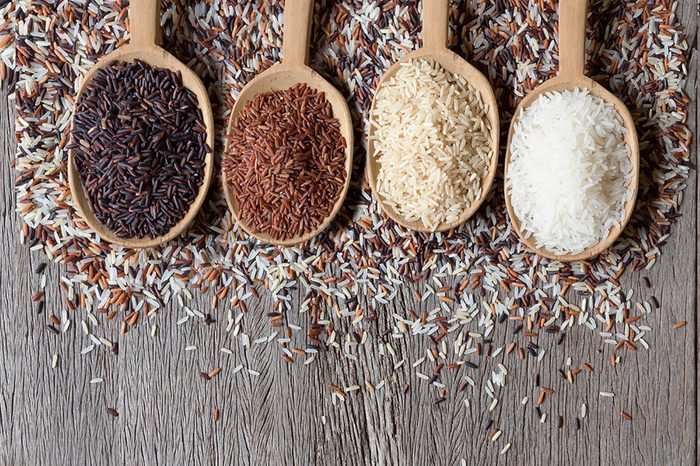
Foods to avoid on a clear liquid diet
To give your digestive system time to heal, sticking to a clear liquid diet is key. Avoid broths with vegetable, rice, or noodle pieces, and be sure to enjoy your tea without cream, creamer, or milk. Juices and lemonades with pulp should also be avoided. (By the way, you’ll follow the same kind of plan when you prep for a colonoscopy.)

The second stage of the diverticulitis diet
After spending a few days on a clear liquid diet, your health care provider will likely transition you to a full liquid diet. This phase of the diet for diverticulitis consists of liquids permitted on the clear liquid diet along with things like milk, pudding, thick soups, and cooked cereals.

Foods to eat on a full liquid diet
Before you make any changes to your diet, always consult a physician, A gastroenterologist may tell you to eat the following foods when embarking on a full-liquid diet:
-
Beverages, including milk, milk substitutes, and fruit and vegetable juices
-
Smooth ice cream, sherbet, and frozen yogurt
-
Yogurt without fruit (And that yogurt will help you feel better about this diet!)
-
Pudding
-
Cream of wheat
-
Cream of rice
-
Butter, margarine, and oils
-
Ice pops without added fruit pieces
-
Broths and tomato soup
-
Liquid nutritional supplements (take only if advised)
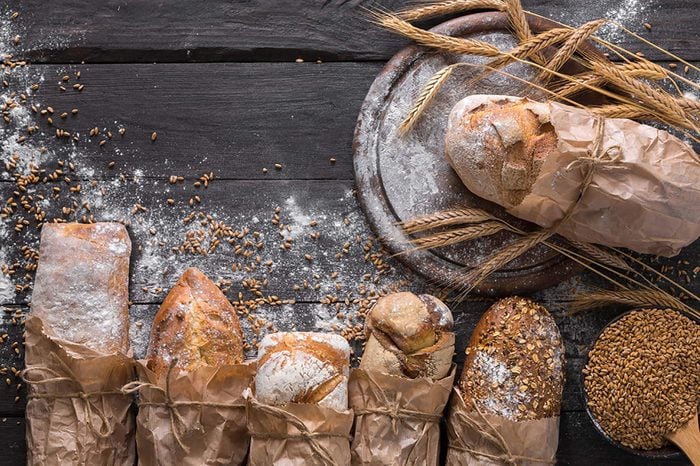
Foods to avoid on a full-liquid diet
Until your health care provider recommends otherwise, avoid foods high in fiber, like nuts and seeds, whole fruits and vegetables, and high-fiber whole grains like cereal, brown rice, and whole wheat bread, says Alissa Rumsey. RD, a registered dietitian in New York City. Thankfully, after a few days following this part of the diverticulitis diet plan, you will likely soon be able to consume more solid foods.
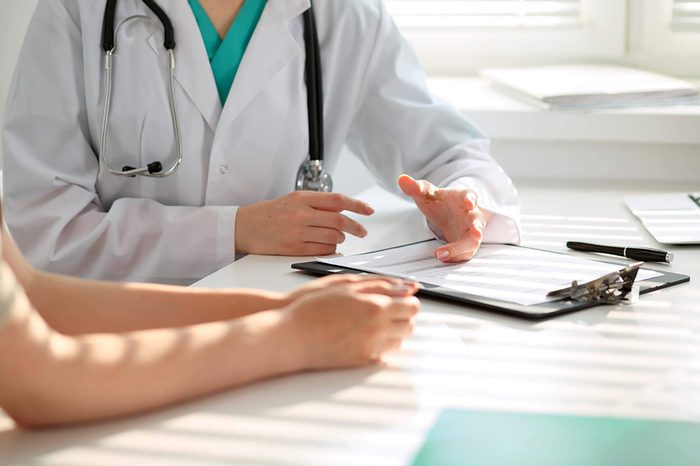
The third stage of a diverticulitis diet
“Once you start feeling better, ask your doctor if you can slowly start reintroducing some low-fiber solid foods into your diet, says Rumsey. “This allows you to see if your flare-up has improved, or if you still need to be avoiding fiber.” When you do finally get back on a high-fiber diet, protect your belly by avoiding these common mistakes.

Foods to eat on a low-fiber diet
In addition to all of the things you’ve been eating as part of your full-liquid diet, your health care provider may recommend things like:
-
Canned or cooked fruits (applesauce or canned peaches)
-
Canned or cooked vegetables
-
Eggs, fish, and poultry (Ever wonder why Americans refrigerate eggs but Europeans don’t?)
-
Refined white bread
-
Low-fiber cereals (less than 3 grams of fiber per serving)
-
Cheese
-
White rice, pasta, and noodles
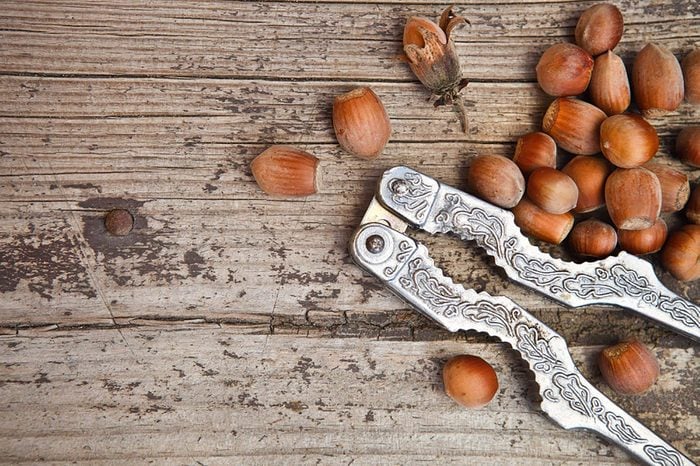
Foods to avoid on a low-fiber diet
Due to their high fiber content, Rumsey says it’s best to remove the skins from fruits and vegetables. She also advises eating cooked or canned produce instead of the raw varieties as they tend to have less fiber. Other high-fiber things to skip include nuts and seeds, legumes, and whole grains, Rumsey says.

Avoiding future diverticulitis flare-ups
After you start feeling better, ask your physician or dietitian if you’re ready to add more fiber back into your diet. “If you get the green light, you should slowly increase your fiber intake back up to the recommended 25 to 35 grams per day,” Rumsey advises.
Although no specific foods are known to trigger diverticulitis attacks and no particular diet has been proved to prevent attacks, Koszyk says following a high-fiber diet may help. “Consuming fruits, vegetables, whole grains, legumes, nuts, and seeds can result in adding bulk to the stools which can help them pass through the body more easily on a daily basis.”
Exercising regularly and drinking plenty of water may also help ward off flare-ups by encouraging bowel movements. “When consuming a high-fiber diet, people should also drink about 80 to 96 ounces, or 10 to 12 glasses, of water per day. This helps high-fiber foods pass more easily through the GI tract,” Koszyk says. Use these 13 genius tricks to guarantee you’ll drink enough water.
Some research also indicates that consuming probiotics can help prevent a flare-up. “Although the research is still mixed, some people have had positive results when consistently consuming probiotic-rich foods that contain live and active cultures,” Koszyk says. Plain Greek yogurt, tempeh, miso, and sauerkraut are all potent sources, as are these 7 foods that boost good gut bacteria.